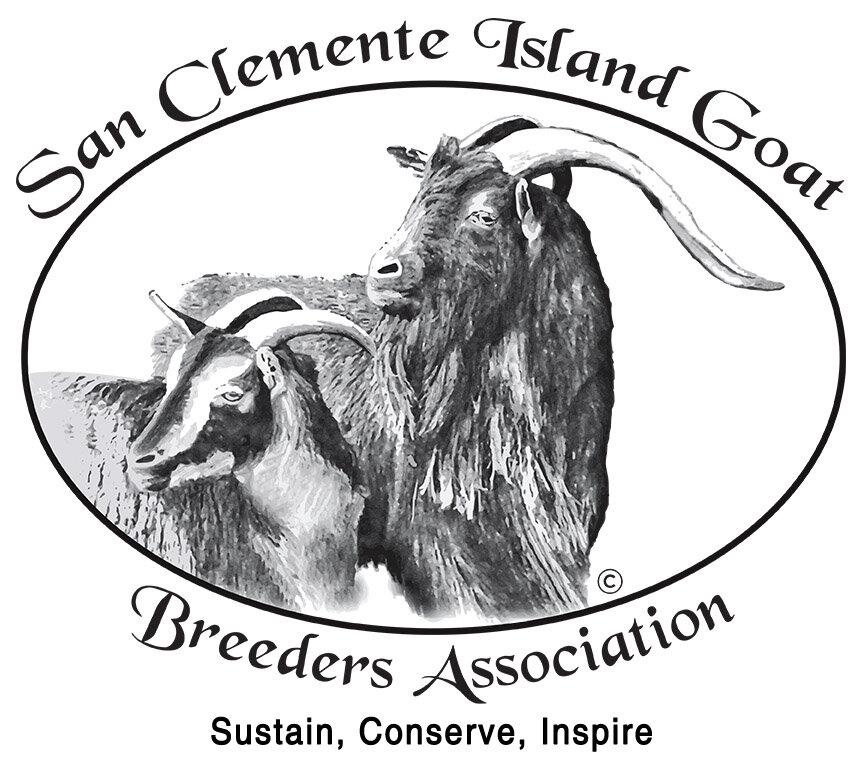Our Mission
The mission of the SCIGBA is to promote the San Clemente Island Goat as a viable multipurpose goat while preserving the historical traits of the island goat and the unique genetic diversity. This includes but is not limited to:
Guarding the purity of the San Clemente Goat breed
Retaining pedigree records of all animals that qualify as San Clemente Island Goats under the Association’s set of guidelines
Providing technical support and opportunity for collaboration to San Clemente Island Goat growers and breeders to further the breed’s purity, conservation, and attract new breeders
Exhibiting livestock and educating the public in order to promote interest in the San Clemente Island Goat
Who we are
Our members are small farmers, conservationists, and volunteers dedicated to the San Clemente Island Goat breed.
Board of Directors
Sarah J. Butcher Howell, President (2025)
Laurel Sherrie, Vice-President (2024)
John F. Carroll, Secretary (2025)
Terry Sweitzer, Treasurer (2023)
Lisa Leonard, Director at Large (2024)
Becky Bulkley, Director at Large (2025)
Technical Advisor
D. Phillip Sponenberg, DVM, PhD
Professor, Pathology and Genetics
Virginia-Maryland Regional College of Veterinary Medicine,
Virginia Tech
Blacksburg, VA 24061. USA
Phone: 540-231-4805
Fax: 540-231-6033
E-mail: dpsponen@vt.edu
Education
BS, Texas A&M University, 1975
DVM, Texas A&M University, 1976
Ph.D., Cornell University, 1979
Dr. Sponenberg with a Dražnica goat in Slovenia
Clinical Service duties include diagnostic histopathology and necropsy. Teaching included reproductive and endocrine pathology, domestication and genetic resources, veterinary genetics and small ruminant medicine. Service roles have included Director of Student Affairs and Advisor to Student Chapter of the American Veterinary Medical Association.
Research interests include pathology and genetics. Genetic work includes single gene diseases in domesticated animals, and color in domesticated animals. Research over 50 years has focused on the conservation and history of domesticated animal genetic resources. Conservation of uniquely North American livestock genetic resources has been a topic of special emphasis.
Publications include sixteen books (including Equine Color Genetics, A Rare Breeds Album of American Livestock, Introduction to Heritage Breeds, Managing Breeds for a Secure Future, Practical Color Genetics for Livestock Breeders), 33 chapters of books (on pathology as well as genetics and conservation), 126 refereed journal publications, 19 invited papers, and 445 publications in the lay press on genetics, livestock history, and conservation of rare breeds of livestock.
Service roles include for technical advisor for the Livestock Conservancy, a not-for-profit organization working to conserve genetic resources of livestock species in North America. This work involves the identification of livestock genetic resources, as well as their phenotypic and historic characterization. Work includes the development of conservation strategies for livestock breeds. This extends to a personal herd of Myotonic goats, Brahma chickens, and Karakachan Livestock Guard Dogs.



